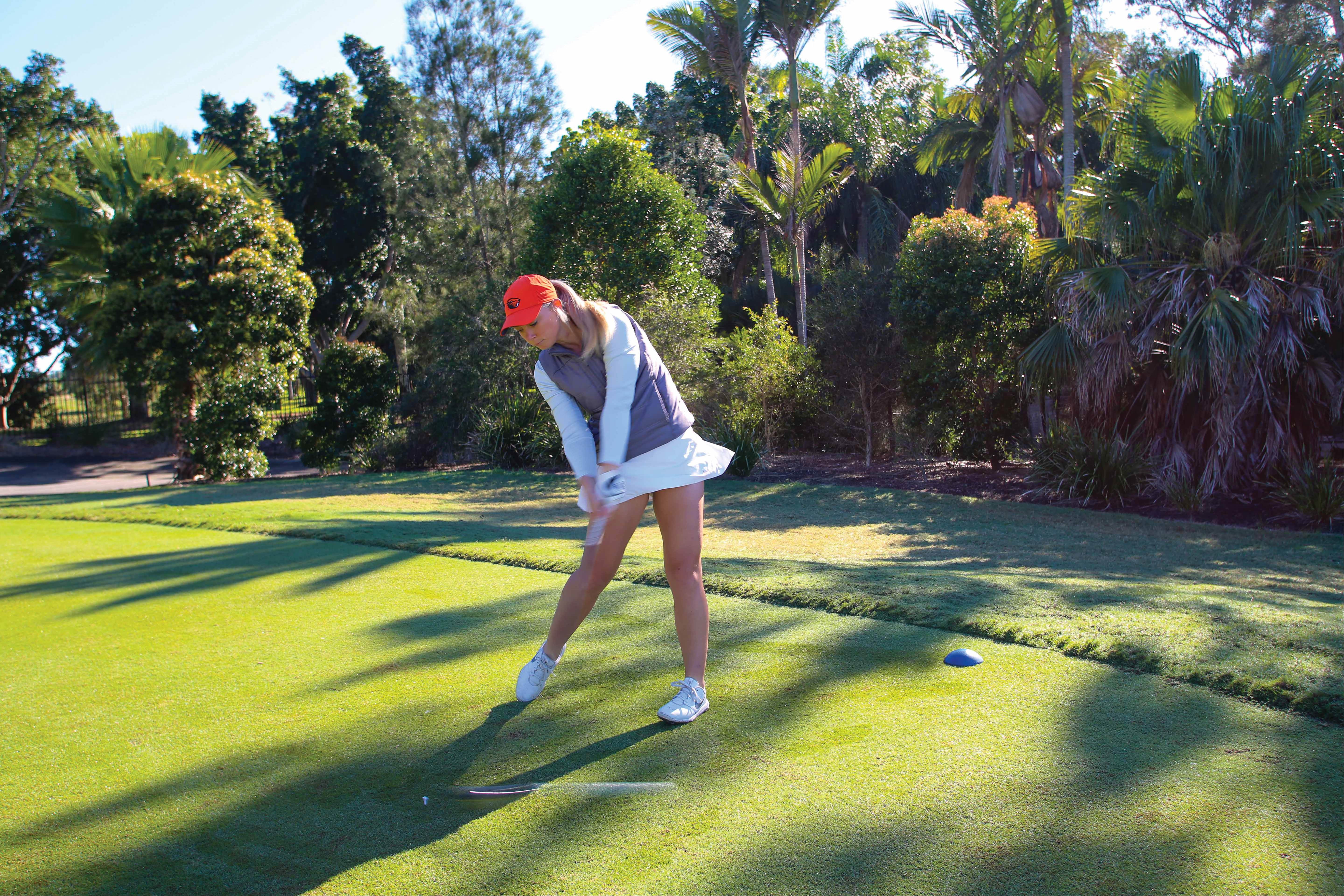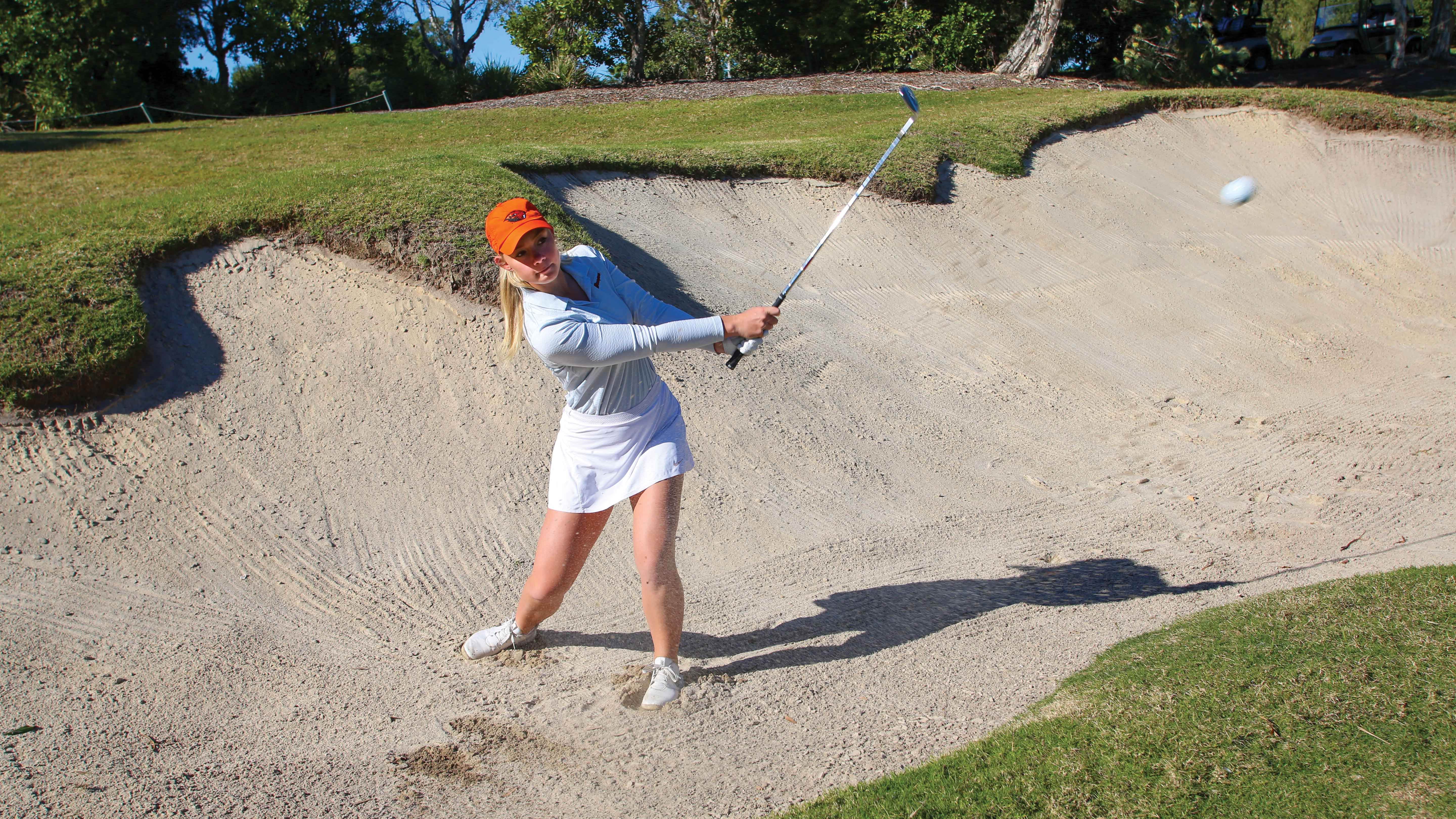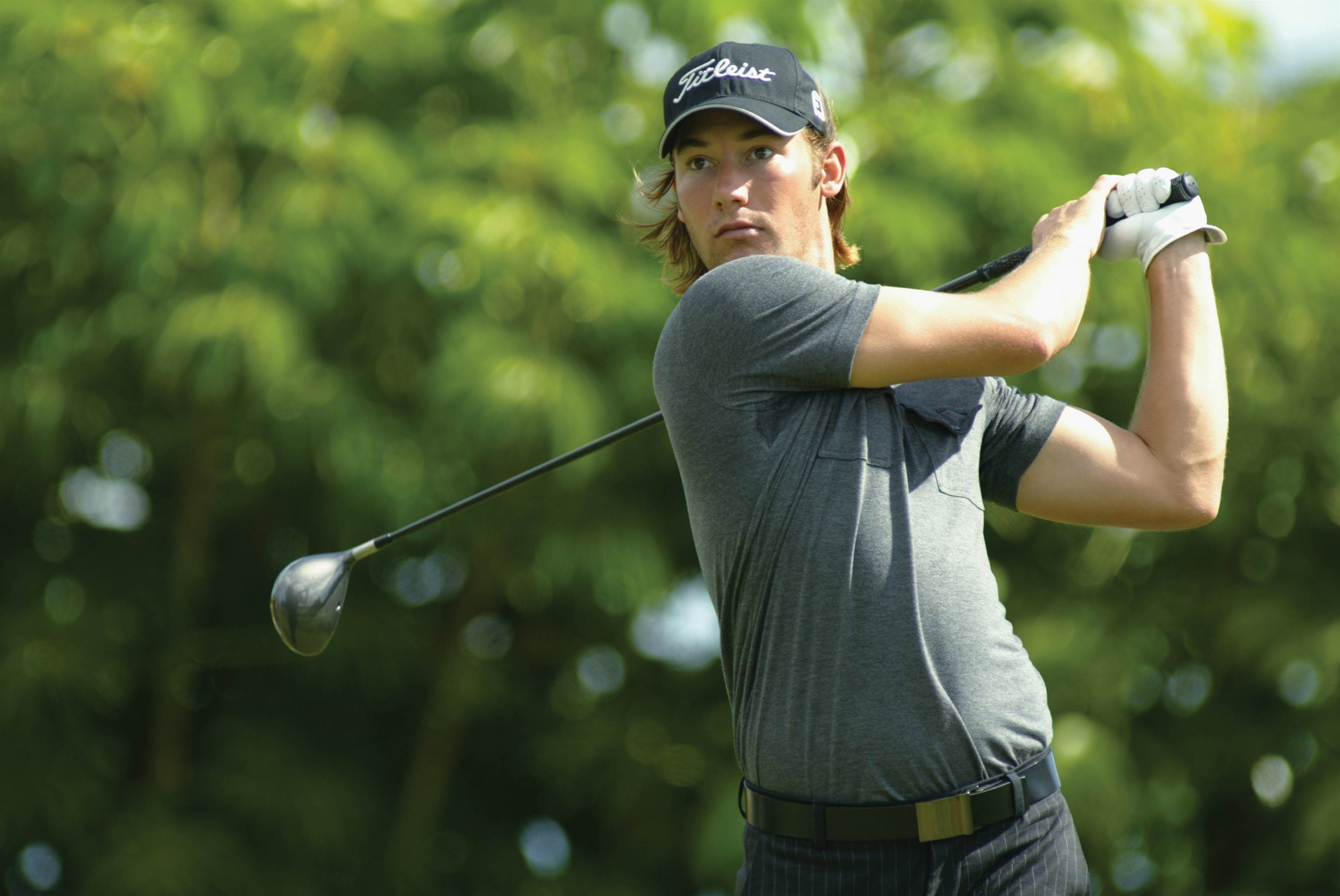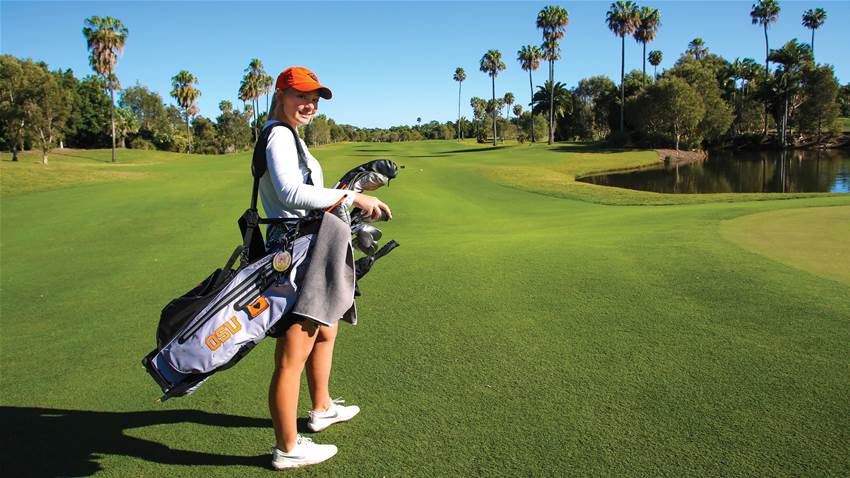More and more young Australian golfers are being scouted to the United States college system. So we spoke with Isabelle Taylor, who currently attends Oregon State University, to find out why our Aussies are in such high demand.
Not many people can remember their first day of school or university and Issy Taylor, who has just completed her freshman year at Oregon State University, is certainly no exception to that rule. But her reasoning is quite exceptional – and it serves as an enthralling insight into the scouting process of the United States college system.
The Sydney-born Gold Coaster first laid eyes on Oregon State during her official visit, which came at the beginning of 2018, lasted for 48 hours and was paid for by the college.
“That first visit to Oregon State was kind of a blur. I flew all the way from Brisbane to Los Angeles to Portland and then drove two and a half hours to the college. I honestly think I spent more time in airports and in the air than I did on campus,” Taylor told Golf Australia magazine.
“The colleges in the US basically have this rule, where if they’re going to pay for you to come and look at the college, you’re only allowed on campus for 48 hours. But I got to look around the college and stay in the dorms for two nights, which was really cool.”

Taylor, who celebrated her 20th birthday in early September, is studying a double major in new media and communications and is hoping to minor in journalism.
She is also one of seven women on the college’s golf roster and was recently named an All-American Scholar, meaning she’s maintained a 3.5-plus grade point average (her current GPA is 3.7) and played in at least 75 percent of tournaments (she’s played in every event).
Not bad considering she used to “hate golf” and never considered herself to be academically talented.
“I was pretty chuffed. It’s literally the first academic award I’ve ever gotten in my whole entire life. I’ve never really been a smart cookie,” laughed Taylor, who made the semi-finals of the Queensland Women’s Amateur Championship in August.
“When I started playing golf, I really didn’t like it. My dad convinced me one day to go down and do a clinic at the golf club – and I absolutely hated it, I hated golf so much (laughs). I played competitive tennis growing up and I loved that, so my dad had to bribe me to play golf and would give me money if I won tournaments.”
So why and how has Taylor ended up playing college golf for the Oregon State Beavers?
Well, it all started four years ago when she was competing at the Greg Norman Junior Masters at Palmer Colonial on the Gold Coast.
Taylor’s mother, Julie, was walking the course and offering support when she happened to be approached by a coach from the University of Colorado, who asked whether she knew anybody that was playing.
They got to talking and the coach eventually explained to Julie how the college system worked – including how they gave out scholarships – which seemed to spark an enjoyment and passion for the game that Taylor had been missing.
“I started to investigate the process and was like, ‘wow, that’s something I really want to do’ and started reaching out to some coaches. I found as I was getting older and getting better, coaches were starting to reach out to me, too,” Taylor explained.
“My current coach from Oregon State (Dawn Shockley) reached out to me around the end of 2016. She really liked what I was doing and she ended up flying out to Australia and watched me play the Aussie Amateur. She liked what she saw and wanted me to come and visit the college. I flew over, met the girls on the team and I just loved it, so it was an easy decision for me to enrol in the end.”

Taylor believes her relaxed personality, competitive nature and background in team sports would have been looked upon favourably when she was scouted by Shockley and Oregon State.
“I think that US college coaches like that Aussies are super competitive and we’re also good teammates. I think they see us as very easy-going – but we’re also very driven and we want to win,” Taylor said.
There are more than 1,000 US colleges offering men’s golf, most being large public universities, across five divisions. For women, there are 996 colleges with golf programs.
The Sanctuary Cove member also shed light on why more and more Australians are being lured to colleges in the States, emphasising the opportunities on offer and the strength of competition within the National Collegiate Athlete Association (NCAA), which governs most of the US colleges with a golf program.
“I think that Australians like going over to colleges in the US because of the opportunities it brings – we have nothing in Australia like college athletics, there’s nothing that even compares to it. I think it’s a great stepping stone in between being a good junior amateur, to then hopefully going to professional golf,” she said.
“The standard of competition, once you do make it onto your team and start playing in the NCAA tournaments, is just unreal. It’s a whole level up from what we have back in Australia. That was hard coming in as a freshman because I had no idea what to expect, especially as an international I had no idea what was coming at me.”
“I think that US college coaches like that Aussies are super competitive and we’re also good teammates.” – Issy Taylor
Taylor, at this point, was quick to acknowledge the success of her good friend Gabi Ruffels, who recently came painfully close to winning back-to-back US Women’s Amateur Championship titles.
“I think what Gabi has done is absolutely awesome. She’s a killer,” Taylor said wholeheartedly.
“We’ve played junior golf together since we were 15. I think it’s unreal to see Gabi, who is just a normal girl, doing the amazing things that she’s doing. I think it’s great for college athletics, it’s great for Australian golf and it’s great for her because she’s worked so hard.
“I think it just proves that college does have a lot of benefits for a lot of people – and other girls should definitely look at it as an option, because clearly it can lead to great opportunities.”
Ruffels, who spoke with Golf Australia magazine after becoming the first Australian to win the US Women’s Amateur last year, echoed Taylor’s sentiments on the US college system.
“Coming to America has been the best decision I’ve ever made,” Ruffels said.
“Coming to a school like the University of Southern California, where the competition – not only between other schools but even between my teammates – is world-class, has made me get so much better. I think getting that perspective has made me work harder, so I would definitely, definitely tell girls that it’s a really great opportunity to come over here.”

Both Ruffels and Taylor compete in the Pacific-12 Conference and are having to come to terms with the impacts of the coronavirus pandemic, which wiped out the remainder of the 2019/20 season and numerous pre-season events that were on their respective radars.
“It meant they cancelled our national championship, our conference championship and all our major events that we had been working towards. It took a really long time for that to sink in and for me to actually believe it,” said Taylor, who spent the majority of her summer break at home on the Gold Coast, where she worked behind the bar at a tavern.
“It’s very frustrating – but this is happening everywhere, it’s not like it’s something that’s only happening in one country or one state.”
Taylor might not remember much about her first visit to Oregon State University – it was over as quickly as it begun, after all – but she will never forget the journey it took for her to get there.
Returning to the States for her sophomore year sounds as though it will only add to
that narrative.
“There’s just so many rules with COVID right now and nobody knows what’s going to happen, especially in college environments. It’s a scary time to be going to a place where there’s 36,000 students all in one small town,” Taylor concluded.
THE SCOUTING PROCESS
There are multiple ways to gain an athletic scholarship from colleges in the United States, however finding these opportunities can be difficult if you’re not already being noticed by recruiters.
Prospective students need to be in contact with the right people – such as coaches – and in addition to their talent, will need to possess the appropriate visa, history of their academic records and an avenue to the US college entrance exams.
It is also important to be proactive and do your research. For instance, do you know how many scholarships are available at your desired institution? Do you know when the recruiting process starts? Do you know how good you have to be to get sport scholarships? Are you eligible for the scholarship you’re hoping to acquire?
There are several companies – some of which have been listed below – and free resources that can provide useful assistance with all of this.
For more information, visit Aus Recruit (www.ausrecruit.com); Athletes Agency (www.athletesagency.com.au); Australian Athletic Scholarships (www.athleticscholarships.net); and Study & Play USA (www.studyandplayusa.com.au).
AUSSIE ALUMNI
Australia boasts an impressive list of golfers who have graced the US college system. Here are just some of our successful exports …
ADAM SCOTT (University of Nevada-Las Vegas)
The Queenslander left Australia in 1998 as an 18-year-old to become part of UNLV’s golf team from 1999-2000, where he played alongside the likes of Charley Hoffman.
Scott, who was World No.1 for 11 weeks in 2014, told PGATour.com three years ago that he “picked the college with the best-looking prospectus” and UNLV “had a really beautiful glossy magazine about their golf program.”
The university also happened to have the No.1 ranked golf team in the country.
The 2013 Masters champion and winner of 13 PGA Tour titles knew he wanted to end up on the US circuit – and he thought that the college system, where he was heavily sought after, would be the best place to develop his game.
Scott developed so rapidly, however, that he turned professional in 2000 and departed UNLV before claiming his degree.
STEVE ELKINGTON (University of Houston)
 The New South Welshman departed Australia in 1982 to take up a scholarship at the University of Houston, where he helped the Cougars win three national titles (1982, 1984 and 1985).
The New South Welshman departed Australia in 1982 to take up a scholarship at the University of Houston, where he helped the Cougars win three national titles (1982, 1984 and 1985).
Elkington, renowned for his world-class ball-striking, captured 10 titles on the PGA Tour between 1990 and 1999, including his playoff victory against Colin Montgomerie at the US PGA Championship in 1995.
The now 57-year-old, who resides in Houston, also claimed the Players Championship in 1991 and 1997.
KATHERINE KIRK (Pepperdine University)
The Queenslander graduated from Pepperdine University in California in 2003 after studying Sports Administration.
Kirk was the NCAA College Player of the Year in 2003 and was an All-American from 2002 to 2003. The three-time LPGA Tour winner also shot the lowest 18-hole score in Pepperdine’s history and won eight collegiate tournaments. Kirk has played on the LPGA Tour since 2004, recording 37 top-10s and banking more than US$5.4 million.
MATT JONES (Arizona State University)
The Sydneysider moved to the US in 1998 to attend Arizona State University, where he became an All-American in 2001.
Jones turned professional later that year and has played on the PGA Tour since 2008, winning his lone title at the Houston Open in 2014.
The two-time Australian Open champion (2015 & 2019) was part of ASU’s conference-winning team in 1999 and 2000 and also competed in three NCAA championships.
JAMES MCLEAN (University of Minnesota)
 The Victorian was the individual champion at the NCAA Division 1 Championship in 1998 and was an All-American that year and again in 1999. He turned professional in 2000 and played events on the PGA Tour, European Tour and Japan Tour.
The Victorian was the individual champion at the NCAA Division 1 Championship in 1998 and was an All-American that year and again in 1999. He turned professional in 2000 and played events on the PGA Tour, European Tour and Japan Tour.
OTHER NOTABLE NAMES: Aron Price (Georgia Southern University), Maverick Antcliff (Augusta University), Oliver Goss (University of Tennessee), Lyndsey Wright (Pepperdine University) and Alison Whitaker (Duke University).
Related Articles

Feature Story: Moving the Needle

The Aussies at The Open













